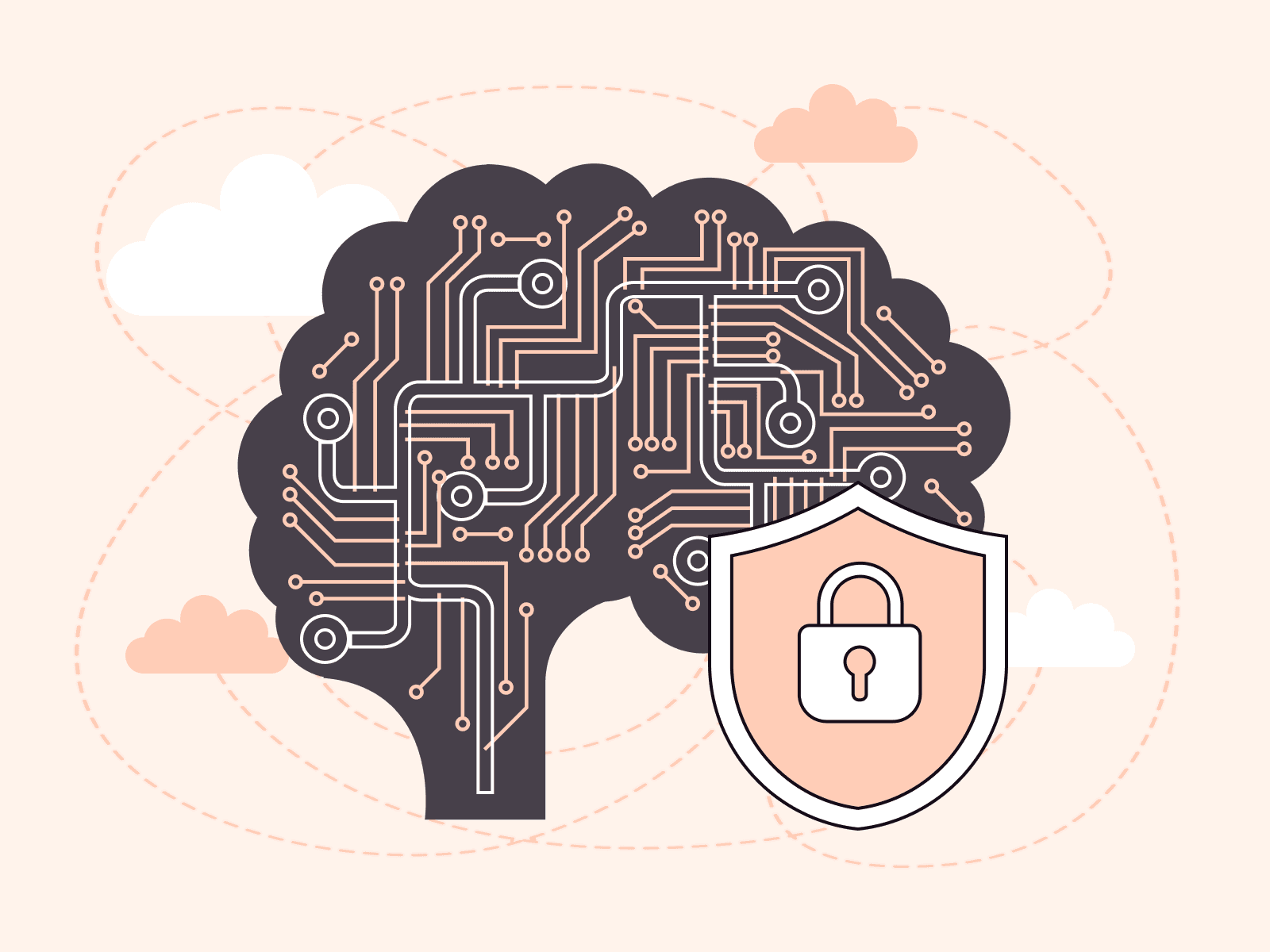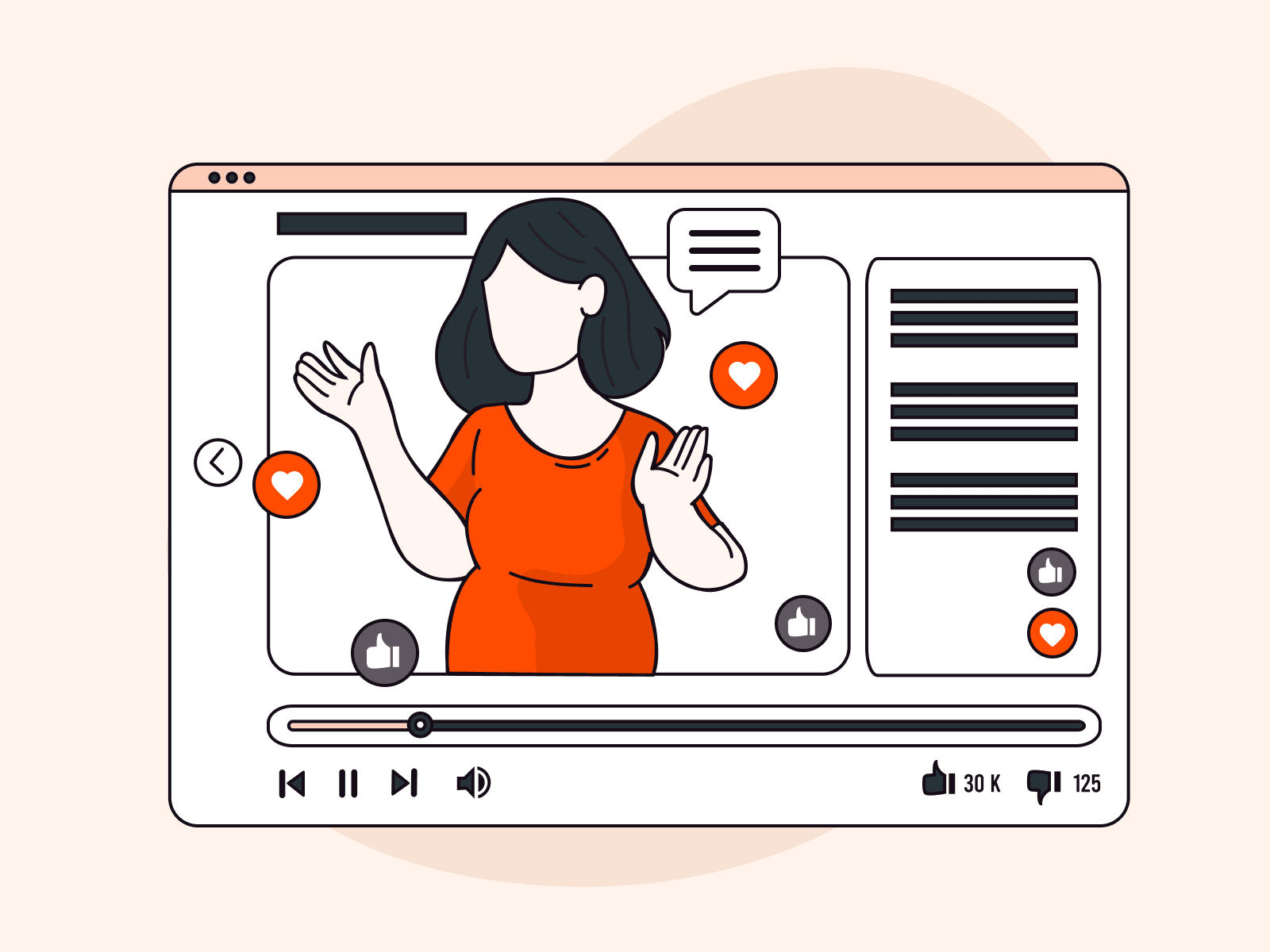Machine learning (ML) is a subset of artificial intelligence (AI) that transcends traditional programming boundaries. ML offers solutions to complex problems without the need for explicit coding, like enabling video games to distinguish between diverse avatars and automating business operations. This article explains how machine learning works, its significance, and applications across industries. We’ll also discuss the advantages it brings to businesses and the considerations that decision-makers must keep in mind when considering its integration into their strategies.
What Is Machine Learning?
Machine learning (ML) is a subset of artificial intelligence (AI). AI encompasses the broader concept of machines carrying out tasks in smart ways, while ML refers to systems that improve over time by learning from data.
Machine learning equips computers with the ability to learn from and make decisions based on data, without being explicitly programmed for each task. ML is a method of teaching computers to recognize patterns and analyze data to predict outcomes, continuously enhancing their accuracy and performance through experience.
For example, when we want to teach a computer to recognize images of boats, we wouldn’t program it with rules about what a boat looks like. Instead, we’d provide a collection of boat images for the algorithm to analyze. Over time and by examining more images, the ML algorithm learns to identify boats based on common characteristics found in the data, becoming more skilled as it processes more examples.
While machine learning can speed up certain complex tasks, it’s not suitable for everything. When it’s possible to use a different method to solve a task, usually it’s better to avoid ML, since setting up ML effectively is a complex, expensive, and lengthy process. More on the pros and cons of machine learning later.
How Does Machine Learning Work?
Let’s dive into the machine learning process.
Learning Categories
Before we explore the six steps of the ML process to understand how it works, it’s important to understand that machine learning can be broadly classified into four main learning categories: supervised, unsupervised, semi-supervised, and reinforcement. The type of data—the learning category—informs every step of how ML works, since ML is a data-based process.
Let’s look at these four learning categories.
- Supervised learning: Supervised learning algorithms learn from predefined data. Once trained, the algorithm then makes predictions based on this data and adjusts its strategy based on the accuracy of its predictions (regression). One example of this type of machine learning is email spam detection. The algorithm is trained with numerous email messages that are labeled as either “spam” or “not spam.” It learns to identify patterns and keywords associated with spam to classify new emails accurately.

- Unsupervised learning: Unsupervised learning algorithms analyze data that has not yet been defined or labeled. They look for patterns or similarities among the input data without any prior instruction on what to find and then group the data accordingly. Market segmentation is a typical application. Without knowing the categories of customers beforehand, the algorithm groups customers based on purchasing behavior and demographics, helping businesses tailor marketing strategies.

- Semi-supervised learning: Semi-supervised learning sits between supervised and unsupervised learning. It uses both labeled and unlabeled data for training, beneficial when acquiring a fully labeled dataset is too expensive or laborious. For example, consider a photo archive where only some photos are tagged with descriptions. Semi-supervised learning can use the tagged photos to learn to classify and tag the rest of the photos in the archive.

- Reinforcement learning: Reinforcement learning involves teaching the model to make a sequence of decisions. The model learns to achieve certain results in an uncertain, potentially challenging environment. It uses trial and error to come up with a solution to the problem and receives feedback in terms of rewards and penalties. A practical example is a robot that learns to navigate a room by moving around and receiving feedback. Hitting an obstacle might result in a penalty, while successfully moving from point A to B increases its reward. Over time, the robot learns to navigate the space efficiently.

Regardless of the learning category, machine learning uses a six-step methodology.

Step 1: Data Collection and Integration
The first step in ML is understanding which data is needed to solve the problem and collecting it. Data specialists may collect this data from company databases for customer information, online sources for text or images, and physical devices like sensors for temperature readings. IT specialists may assist, especially in extracting data from databases or integrating sensor data. The accuracy and effectiveness of the machine learning model depend significantly on this data’s relevance and comprehensiveness. After collection, the data is organized into a format that makes it easier for algorithms to process and learn from it, such as a table in a CSV file, Apache Parquet, or Apache Arrow.
Step 2: Data Visualization and Analysis
Before applying complex machine learning algorithms, the data specialists visualize and analyze the data using graphs and statistics to reveal underlying patterns, spot data points that don’t fit the general trend (outliers), and discover relationships between different data aspects (correlations). These insights ensure that the features selected in the next step accurately reflect the data’s dynamics and directly address the specific problem at hand.
Step 3: Feature Selection and Engineering
Features are specific attributes or properties that influence the prediction, serving as the building blocks of machine learning models. Imagine you’re trying to predict whether someone will buy a house based on available data. Some features that might influence this prediction include income, credit score, loan amount, and years employed. Data scientists and machine learning engineers work together to choose the most relevant features from a dataset.
Existing features can also be combined in new ways. For instance, ML engineers could create a new feature called “debt-to-income ratio” by dividing the loan amount by the income. This new feature could be even more predictive of someone’s likelihood to buy a house than the original features on their own. The more relevant the features are, the more effective the model will be at identifying patterns and relationships that are important for making accurate predictions.
Step 4: Model Training
The training phase is the core of the machine learning process, where machine learning engineers “teach” the model to predict outcomes. This involves inputting the data, which has been carefully prepared with selected features, into the chosen algorithm (or layer(s) in a neural network). The model is selected based on the type of problem and data for any given workload. Note that there’s no single correct approach to this step, nor is there one right answer that will be generated. This means that you can train using multiple algorithms in parallel, and then choose the best result for your scenario.
As the algorithm processes the data, it becomes a model. The model adjusts its inner workings—or parameters—to better match its predictions with the actual observed outcomes. Returning to the house-buying example above, it’s as if the model is learning the landscape of what a potential house buyer looks like. It analyzes the features and how they relate to actual house purchases (which would be included in the data set). Think of these actual purchases as the “correct answers” the model is trying to learn from.
Step 5: Model Evaluation
During the algorithmic analysis, the model adjusts its internal workings, called parameters, to predict whether someone will buy a house based on the features it sees. The goal is to find a sweet spot where the model isn’t too specific (overfitting) or too general (underfitting). This balance is essential for creating a model that can generalize well to new, unseen data while maintaining high accuracy.
After training, the model’s performance is evaluated using new, unseen data. This step verifies how effectively the model applies what it has learned to fresh, real-world data. Here, data scientists and machine learning engineers use different metrics, such as accuracy, precision, recall, and mean squared error, to help measure its performance across various tasks. This evaluation ensures the model’s predictions are reliable and applicable in practical scenarios beyond the initial training data, confirming its readiness for real-world deployment. If needed, adjustments are made and step 4 is repeated.
Step 6: Inference
The final step in the machine learning process is where the model, now trained and vetted for accuracy, applies its learning to make inferences on new, unseen data. Depending on the industry, such predictions can involve forecasting customer behavior, detecting fraud, or enhancing supply chain efficiency. This application demonstrates the model’s applied value by using its predictive capabilities to provide solutions or insights specific to the challenges it was developed to address.
Pros and Cons of Using ML
Machine learning is rapidly becoming indispensable across various industries, but the technology isn’t without its limitations. Understanding the pros and cons of machine learning can help you decide whether to implement ML within your organization.
Advantages of Machine Learning
Machine learning offers key benefits that enhance data processing and decision-making, leading to better operational efficiency and strategic planning capabilities.
- Improved accuracy: When used effectively, machine learning can enhance efficiency and accuracy in business and everyday tasks. Machine learning models process vast amounts of data to find patterns, leading to high accuracy in tasks like speech recognition or market trend analysis, as compared to human and traditional computer processing baselines. This precision improves as the model encounters more data, refining its ability to make decisions or predictions.
- Automation: ML enables the automation of tasks that require data analysis, such as sorting emails or providing customer recommendations, reducing the need for manual intervention. By automating repetitive tasks and thus making processes more efficient, ML allows employees and individuals alike to engage in more creative and strategic projects, boosting productivity and human satisfaction.
- Predictive capabilities: With the ability to learn from historical data, ML can forecast future events or trends, aiding in areas like stock market analysis and demand forecasting, and thus informing strategic planning and decision-making.
- Scalability: ML can process and generate insights from data at a scale beyond human capability, critical for businesses flooded with information from digital sources. ML’s ability to extract patterns and insights from large datasets enables more personalized customer experiences and operational improvements. This streamlined approach leads to informed decisions about marketing, inventory management, and innovation, optimizing resources and fostering deeper customer relationships.
Challenges of Machine Learning
While ML offers remarkable capabilities, it is not without its challenges.
- Data privacy concerns: Using vast amounts of personal and sensitive data to train ML models raises issues around the privacy and security of this information. There’s a risk of exposing personal details if the data isn’t handled with strict privacy measures and ethical guidelines.
- Implementation complexity: Deploying machine learning solutions can be complex, requiring expertise in data science and software engineering to develop, automate, and maintain ML models effectively.
- Need for continuous updates: ML models are not set-and-forget solutions; they require ongoing updates and retraining to stay relevant as new data becomes available or when the environment they operate in changes, demanding continuous investment in time and resources.
Machine Learning Business Use Cases
Here’s how some organizations are currently using ML to uncover patterns hidden in their data, generating insights that drive innovation and improve decision-making.
- Healthcare: ML is modernizing patient care and research by enhancing diagnostics, personalizing treatments, and monitoring patient health effectively. For instance, healthcare providers now use ML to sift through patient data, enabling physicians to spot patterns that could lead to early disease detection and identify potential therapeutic targets faster, thereby improving patient outcomes.
- Finance: The finance sector benefits from ML through improved fraud detection, risk management, and personalized banking services, thus bolstering security and, in turn, increasing customer trust. A fintech company might deploy ML algorithms to scrutinize transactions in real-time, quickly identifying and blocking fraudulent activity to protect customer accounts.
- E-commerce: Today’s consumers want the personalized shopping experience of brick-and-mortar stores, without having to leave the comfort of their homes. ML helps to meet this demand, transforming e-commerce by powering recommendation engines, optimizing inventory management, and enhancing customer service through chatbots. For example, Amazon uses and enables its vendors to use machine learning for personalized product suggestions. It uses ML algorithms to analyze a vast amount of customer data, including purchase history, browsing behavior, search queries, and even items left in abandoned carts to recommend products tailored to each customer’s interests.
- Manufacturing: By forecasting equipment failures before they occur, ML allows for preemptive maintenance, ensuring that machinery operates optimally. This is mission-critical, as even minor malfunctions can introduce flaws in the manufacturing process, leading to substandard products or products being thrown out before sale. Additionally, by reducing unexpected downtime, ML ensures that production processes are not rushed to make up for lost time, which can also compromise product quality. These ML applications help maintain a consistent, controlled manufacturing environment, where products consistently meet set quality standards.
- Marketing: ML is changing the way marketers engage with customers through segmentation, predictive analytics, and personalized campaigns. A marketing agency employing ML can analyze consumer behavior to customize campaigns, significantly enhancing engagement rates and return on investment. This tailored approach allows businesses to connect with their audience more effectively, fostering loyalty and driving sales.
Conclusion
Machine learning significantly impacts how businesses operate. By automating routine tasks, analyzing data at scale, and identifying key patterns, ML helps businesses in various sectors enhance their productivity and innovation to stay competitive and meet future challenges as they emerge.
Looking to integrate ML into your business? Visit Gcore’s ML Model Hub or contact us for a personalized consultation.
Related articles
Subscribe to our newsletter
Get the latest industry trends, exclusive insights, and Gcore updates delivered straight to your inbox.






